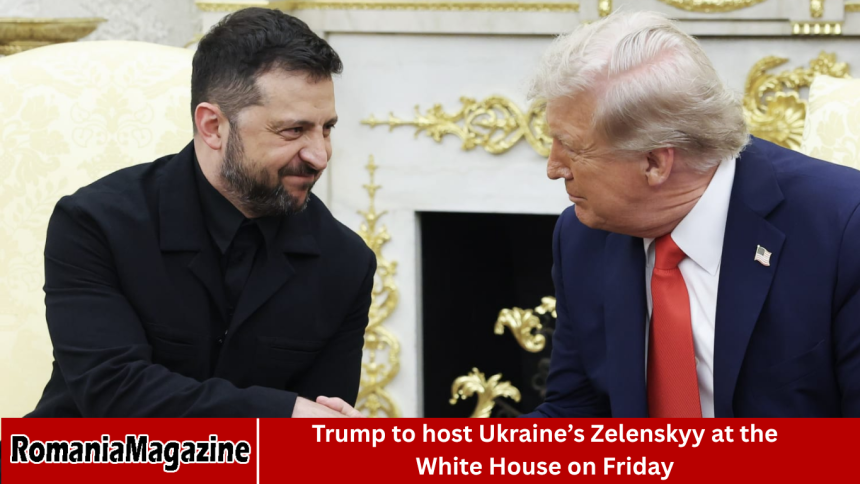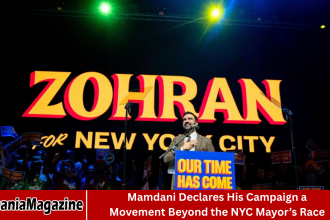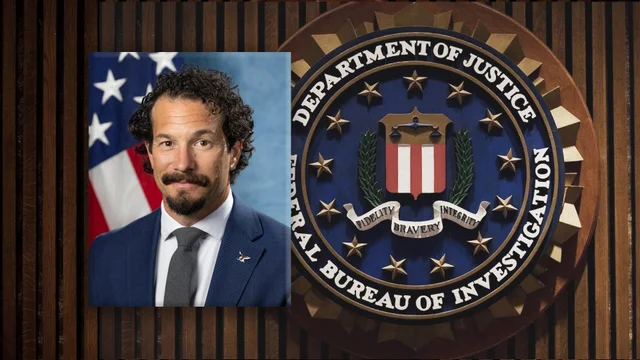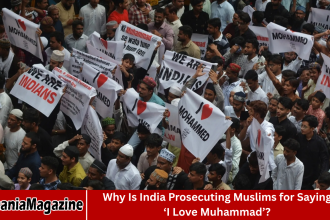Former U.S. President Donald Trump is set to meet Ukrainian President Volodymyr Zelenskyy at the White House this Friday in a highly anticipated diplomatic engagement. The meeting marks a pivotal moment in international politics as the United States reexamines its foreign policy priorities in Eastern Europe.
- The Historical Context of U.S.-Ukraine Relations
- Key Agenda Items for the Trump-Zelenskyy Meeting
- U.S. Military and Financial Aid
- Path Toward Peace Negotiations
- NATO and European Security
- Sanctions on Russia
- Global Economic Implications
- Zelenskyy’s Goals: Securing Commitment and Stability
- Trump’s Perspective: Redefining U.S. Foreign Policy
- The Global Response to the Planned Meeting
- The Domestic Political Impact in the U.S.
- Potential Outcomes and What to Expect
- Broader Implications for Global Politics
- Frequently Asked Question
- Why is President Zelenskyy visiting Donald Trump at the White House?
- What topics will Trump and Zelenskyy discuss?
- How does this meeting affect U.S. foreign policy?
- Will Trump continue military aid to Ukraine?
- How is the international community reacting?
- Does this meeting have any link to Trump’s past impeachment controversy?
- What could be the long-term impact of this meeting?
- Conclusion
The visit also comes against a backdrop of political tension and uncertainty, as Trump’s stance on Ukraine has been one of the most debated topics in American foreign policy circles. His previous comments on cutting U.S. aid, negotiating “a quick peace deal”.
This Friday’s meeting is not just a routine diplomatic encounter; it may shape the next phase of U.S.-Ukraine relations, influence global security discussions, and redefine America’s approach to one of the most significant conflicts of the 21st century.
More Read: Why Is India Prosecuting Muslims for Saying ‘I Love Muhammad’?
The Historical Context of U.S.-Ukraine Relations
Since Ukraine’s independence in 1991 following the dissolution of the Soviet Union, the country has occupied a delicate position between the Western alliance and Russia’s sphere of influence.
The U.S. has consistently supported Ukraine’s democratic transition, military reforms, and aspirations to join NATO and the European Union. However, the relationship has been far from simple.
During Trump’s previous term, Ukraine became the center of a major political storm — the impeachment inquiry of 2019. Trump was accused of pressuring Zelenskyy to investigate political rival Joe Biden and his son, Hunter Biden, in exchange for releasing congressionally approved military aid.
While Trump was acquitted in the Senate, the incident cast a shadow over U.S.-Ukraine relations. Now, with both Trump and Zelenskyy meeting again at the White House, observers see this as a symbolic and strategic reset — one that could either strengthen bilateral ties or introduce new uncertainties.
Key Agenda Items for the Trump-Zelenskyy Meeting
U.S. Military and Financial Aid
Ukraine remains heavily reliant on U.S. military assistance to resist Russia’s invasion. Congress has authorized tens of billions of dollars in aid since 2022, funding everything from ammunition and air defense systems to humanitarian relief.
However, Trump has been vocal about his skepticism regarding “blank check” aid policies. He has repeatedly stated that European countries should “share more of the burden” and that the U.S. must focus on “ending the war, not funding it endlessly.”
This meeting could signal a recalibration — either a continuation of support with tighter oversight or a gradual withdrawal of large-scale funding.
Path Toward Peace Negotiations
Trump has hinted that he could broker a peace deal between Russia and Ukraine within 24 hours if re-elected. While many analysts consider such claims unrealistic, his approach to diplomacy — centered on personal negotiation and pressure — could produce new initiatives.
Zelenskyy, however, has firmly rejected any talks that involve ceding Ukrainian territory. The two leaders will likely discuss potential frameworks for negotiations, humanitarian corridors, and reconstruction strategies for post-war Ukraine.
NATO and European Security
Another major topic will be NATO’s involvement and the future of European security architecture. Trump’s previous criticisms of NATO countries for not meeting defense spending targets stirred unease among allies. Zelenskyy’s push for Ukraine’s NATO membership adds another layer of complexity.
The meeting may help clarify whether a potential second Trump administration would support Ukraine’s NATO aspirations or steer toward neutrality as part of a peace deal.
Sanctions on Russia
The U.S. sanctions regime against Russia has been one of the cornerstones of Western response to the invasion. Trump’s position on sanctions has fluctuated — from enforcing them during his presidency to questioning their effectiveness later.
Zelenskyy is expected to push for maintaining or even tightening sanctions, while Trump might advocate for targeted relief as part of negotiation leverage.
Global Economic Implications
The war in Ukraine has affected global markets, especially energy and grain supplies. Trump’s “America First” trade philosophy could reshape how the U.S. approaches sanctions, energy deals, and international trade routes.
Discussions on rebuilding Ukraine’s infrastructure, foreign investment, and agricultural exports are also on the agenda.
Zelenskyy’s Goals: Securing Commitment and Stability
For Zelenskyy, this meeting is about more than diplomacy — it’s about survival and reassurance. As Ukraine faces battlefield challenges and fatigue among Western donors, Zelenskyy needs to ensure continued U.S. support. His priorities include:
- Securing long-term military commitments.
- Promoting U.S. participation in post-war reconstruction.
- Reinforcing bipartisan support in Washington for Ukraine’s sovereignty.
Zelenskyy’s visit is also an opportunity to rebuild trust with Trump, given the lingering fallout from the 2019 impeachment controversy. His diplomatic approach is expected to emphasize shared democratic values and the global consequences of Russian aggression.
Trump’s Perspective: Redefining U.S. Foreign Policy
Trump’s meeting with Zelenskyy reflects his broader goal of reasserting U.S. global leadership on his own terms. His advisers suggest that he wants to demonstrate he can handle international crises through negotiation rather than prolonged intervention.
Key aspects of Trump’s possible approach include:
- “Deal-making diplomacy”: Using leverage, rather than aid, to drive outcomes.
- “Strategic autonomy”: Reducing U.S. dependency on alliances viewed as one-sided.
- “Peace through strength”: Emphasizing military readiness without committing to open-ended wars.
This meeting could serve as Trump’s opportunity to project himself as a global statesman capable of resolving conflicts pragmatically — a potential campaign advantage as the 2026 political season intensifies.
The Global Response to the Planned Meeting
International reactions to the upcoming meeting have been mixed. European leaders view it as a potential turning point that could either reinvigorate or destabilize Western unity on Ukraine.
- European Union: EU diplomats are cautiously optimistic but wary that Trump could pressure Zelenskyy into unwanted compromises.
- Russia: The Kremlin has reacted with measured statements, expressing hope that Trump “takes a pragmatic approach” — an indication Moscow may expect a softer U.S. stance under Trump.
- China: Beijing has largely stayed neutral but monitors the situation closely, as any peace framework involving Trump could impact its own diplomatic positioning.
The meeting’s outcomes will resonate far beyond Washington and Kyiv — they could influence the entire balance of power in Europe and Asia.
The Domestic Political Impact in the U.S.
The White House meeting also carries significant political implications for Trump at home. His critics argue that his foreign policy unpredictability could undermine U.S. alliances, while supporters see it as evidence of his ability to challenge conventional diplomacy.
Republican lawmakers are divided: some advocate for continued Ukrainian support as a defense of democracy, while others align with Trump’s “America First” ideology, calling for reduced aid spending. Democrats, meanwhile, are likely to use the meeting to highlight Trump’s past controversies with Ukraine.
This intersection of foreign policy and domestic politics ensures that the meeting’s repercussions will echo in Congress, the media, and upcoming electoral debates.
Potential Outcomes and What to Expect
While it’s impossible to predict the exact outcomes, analysts suggest three broad possibilities:
A Renewed Commitment to Ukraine:
Trump could reaffirm U.S. support, but with stricter conditions on aid transparency and shared responsibility among allies.
A Shift Toward Peace Talks:
The meeting could signal a new diplomatic initiative involving Russia, possibly under Trump’s mediation.
Policy Ambiguity:
If no major announcements follow, the meeting may serve more as a symbolic gesture — keeping diplomatic options open without concrete commitments.
Whatever the case, the Trump-Zelenskyy encounter will shape the narrative of U.S.-Ukraine relations for years to come.
Broader Implications for Global Politics
The upcoming meeting also raises questions about the future of global alliances, war fatigue, and international diplomacy. It highlights three ongoing shifts:
- From multilateralism to transactional diplomacy — where deals replace principles.
- From security guarantees to shared defense — as nations reexamine NATO’s scope.
- From Western dominance to multipolar negotiation — where powers like China, India, and Turkey play growing roles in peace talks.
If Trump and Zelenskyy find common ground, it could open new avenues for conflict resolution. If not, it may deepen divisions in the West’s approach to Russia and reshape the geopolitical landscape.
Frequently Asked Question
Why is President Zelenskyy visiting Donald Trump at the White House?
Zelenskyy’s visit aims to secure continued U.S. support for Ukraine, discuss possible peace efforts, and strengthen bilateral ties amid ongoing war pressures.
What topics will Trump and Zelenskyy discuss?
The meeting will cover U.S. military aid, peace negotiations, NATO, sanctions on Russia, and strategies for rebuilding Ukraine’s economy and infrastructure.
How does this meeting affect U.S. foreign policy?
It could redefine America’s approach toward the Russia-Ukraine conflict, signaling either a sustained commitment or a move toward negotiated peace.
Will Trump continue military aid to Ukraine?
Trump has expressed skepticism about unlimited aid but may continue support under tighter conditions, emphasizing accountability and European cost-sharing.
How is the international community reacting?
Reactions are mixed — Europe is cautious, Russia is hopeful for a softer stance, and China is observing quietly as the geopolitical stakes rise.
Does this meeting have any link to Trump’s past impeachment controversy?
Yes, the 2019 impeachment centered on Trump’s communications with Zelenskyy. This meeting offers both leaders a chance to reset their relationship diplomatically.
What could be the long-term impact of this meeting?
Depending on outcomes, it could influence global security, reshape Western unity on Ukraine, and affect future U.S. foreign policy priorities.
Conclusion
Friday’s meeting between Donald Trump and Volodymyr Zelenskyy is more than a diplomatic appointment; it’s a geopolitical crossroads. The stakes are enormous — for Ukraine’s survival, for U.S. foreign policy credibility, and for the future of global order.
Both leaders enter the talks with contrasting visions but a shared understanding that the outcome will be scrutinized worldwide. Whether the meeting results in a breakthrough, a reset, or mere symbolism, it underscores one unchanging truth: the U.S. remains a central actor in the fate of Ukraine and the broader struggle for stability in Europe.









